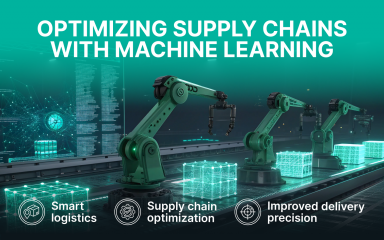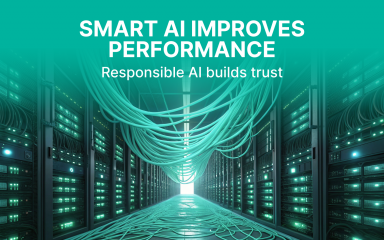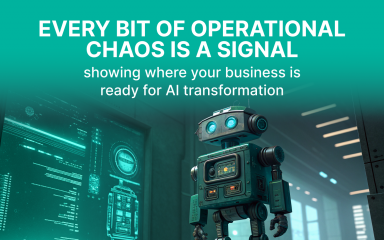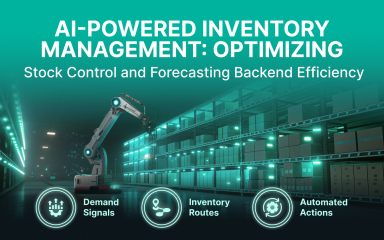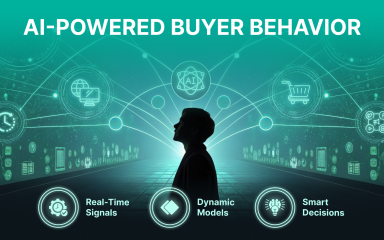Everyone’s talking about open source generative AI. But should you use it?
Generative AI has gone from fringe novelty to boardroom priority in under two years. It can write your emails, generate product descriptions, answer support tickets, and even help build software, all at scale. But as businesses scramble to integrate AI, a critical question has emerged: Should you go open source?
Open source generative AI, or as some call it, generative AI open source, has exploded with possibilities and complexity. From Meta’s LLaMA to Stability AI’s diffusion models, it’s now possible to build powerful AI systems without paying for closed-source APIs. That’s huge. But it also means you’re responsible for everything: the training data, the fine-tuning, the legal compliance, the infrastructure.
And the market agrees. Over 50% of surveyed enterprises already report using open source AI solutions across their tech stack, including data, models, and tools. In sectors like technology, media, and telecom, adoption reaches nearly 70%, often in combination with proprietary models like OpenAI’s or Google’s. Why? Because open source gives them options and leverage.
Let’s unpack what “open source generative AI” actually means in 2025, what’s available right now, why it’s so tempting, and why it’s not always the smartest path forward.
So What Is Open Source Generative AI?
Let’s avoid using all the fluff.
Open source generative AI refers to models (like language models or image generators) whose code, weights, or training data are publicly accessible. These are examples of open source models and AI models, and open source software has played a key role in their development. In contrast to closed-source models like GPT-4 or Claude, open-source generative AI models can often be downloaded, hosted, fine-tuned, or adapted for commercial use, depending on the license.
These models are capable of:
- Text generation (e.g., writing product descriptions, chats, code)
- Image creation (think Stable Diffusion)
- Code generation tasks (from autocomplete to full scripts)
- Speech synthesis and audio generation
- Natural language processing tasks like question answering or sentiment analysis
Advances in machine learning enable these tasks and pre-trained large language models.
Many open source generative AI models process and generate plain text, which is essential for tasks like text generation and embedding data for retrieval.
In other words, they can generate human-like text, realistic images, and even assist in programming, often with surprisingly good results.
What Are the Most Popular Open Source Generative AI Models?
The open source ecosystem moves fast. Many of these models are designed specifically for tasks like text generation, image creation, or code generation. But here are some widely adopted generative AI models as of 2025. Some models are well-suited for specialized applications due to their architecture or training. Certain open-source generative AI models are also considered tools for developers and businesses.
Language Models (Text)
- Meta’s LLaMA 2 & 3: State-of-the-art open source large language models (LLMs) widely used for commercial deployments.
- Mistral AI: Highly efficient models with open weights. Mistral 7B is particularly popular for fine-tuning.
- Falcon (by TII): High-performance LLMs trained on massive datasets, optimized for multilingual use.
These language models are advanced text models capable of generating coherent text and demonstrating deep understanding of context and language.
Image Generation Models
- Stable Diffusion (by Stability AI): Possibly the most famous open source image generator. Used for digital art, product visuals, and marketing. It is capable of generating photorealistic images for various applications, allowing users to create high-quality visuals from detailed textual descriptions.
- DALL·E Mini / Craiyon: DALL·E Mini, now known as Craiyon, is a free AI image generator that can generate AI art from textual descriptions. It is highly accessible and user-friendly, making it easy for anyone to create images from text prompts directly on the web.
- Kandinsky, SDXL, and others are entering the game.
Code Generation Models
- StarCoder and Code LLaMA: For code completion, code generation, and even code assistance across multiple programming languages.
These models come with varying licenses, some truly open source, others just “open weight.” Always read the fine print if you’re thinking about commercial use.
Why Businesses Are Betting on Open Source Models
Here’s the thing: open source generative AI isn’t just about ideology; it’s about control, customization, and cost. There are numerous benefits to using open source generative AI, including its ability to streamline content creation for businesses through AI-powered text and image generation tools.
The Strategic Upside:
- Full control over your AI system: host it on your servers, in your cloud, or even air-gapped
- Custom fine-tuning for domain-specific tasks or tone of voice
- Avoid vendor lock-in and pricing shocks from API-based models
- Privacy & compliance are especially important for regulated industries
- Free access to models for R&D or prototyping
It’s not a coincidence that Amazon, Apple, and Meta are all investing in open source AI models, even while building their own.
And thanks to communities like Hugging Face, these models are more accessible than ever for non-technical users, too. Many come with a user-friendly interface, starter datasets, or ready-to-deploy containers.
 …But What Are the Hidden Risks?
…But What Are the Hidden Risks?
Now for the other side of the coin.
Open source generative AI comes with serious responsibilities, and many businesses underestimate the workload. For example, Meta’s LLaMA model is a newly available open-source large language model (LLM) that can be used for commercial purposes. Still, it is essential to review its licensing terms to ensure compliance carefully.
Deployment Risks Include:
- Legal exposure: Using a model trained on copyrighted data could trigger lawsuits. Even “open” models have murky training data origins.
- Infrastructure costs: Hosting large models isn’t cheap. You’ll need GPUs, bandwidth, and dedicated DevOps.
- Bias and safety: Many open source models lack proper filtering. Outputs can be offensive, inaccurate, or unsafe without guardrails.
- Maintenance burden: You’ll be on the hook for model updates, bug fixes, and performance tweaks.
- Security: Without proper monitoring, these models can become vectors for abuse or hallucinate dangerous misinformation.
In short, with great freedom comes great… liability.
If you’re not equipped to fine-tune, evaluate, and monitor models, open source might not be the best fit, or at least not without a trusted partner.
Fine-Tuning and Hosting: Is It Worth It?
If you’ve got data, a clear use case, and the team to manage it – absolutely.
Many mid-sized eCommerce platforms, for example, are fine-tuning open source LLMs for:
- Product description generation
- Customer Q&A bots
- Multilingual support
- Semantic search and recommendation engines
By training on contextually relevant text like product catalogs or support tickets, these systems can outperform generic APIs with lower long-term costs.
But “fine-tuning” isn’t as simple as flipping a switch. You’ll need:
- Curated training data
- An understanding of language understanding vs. text generation
- DevOps for deployment
- Evaluation pipelines
It’s a powerful but resource-intensive approach. For many teams, hybrid models (open-source base + commercial tools) are a smarter starting point.
Closed vs. Open Source: What Actually Matters?
Forget the purity wars. The real question is: what gives you the best balance of cost, control, and performance for your business?
| Feature | Open Source Generative AI | Closed Source Models (e.g. GPT-4) |
| Customization | Full control (via fine-tuning) | Limited (via API prompts) |
| Hosting | Self-hosted or cloud | Vendor-hosted only |
| Cost at scale | Lower (after setup) | Pay-per-token/API fees |
| Data privacy | High (if self-hosted) | Depends on provider |
| Maintenance | Your responsibility | Handled by provider |
| Features/accuracy | Variable | Typically higher out-of-the-box |
| Commercial use license | Varies; check carefully | Typically included |
There’s no one-size-fits-all answer here. But if you need custom outputs, work in multiple languages, or handle sensitive data, open source is likely a valuable tool in your stack.
Final Thoughts: When Does Open Source Make Sense?
Here’s the honest take:
- If you’re a startup with no AI infra or ML team, then go closed source.
- If you’re a mid-sized business with clear goals and some in-house AI chops, generative AI models open source can be a great asset.
- If you’re an enterprise with strict compliance needs or heavy customization demands, open source might be your best (or only) option.
Generative AI isn’t just about creating images or text. It’s about building systems that understand, generate, and respond across different scenarios, users, and channels.
Open-source generative AI gives you the freedom to build exactly what you need — but that freedom comes with trade-offs.
And if you’re unsure? Start small. Explore open source tools in a sandbox. Fine-tune a lightweight model. See what your data can do.
In a space moving this fast, even testing can teach you a lot.
 …But What Are the Hidden Risks?
…But What Are the Hidden Risks?
